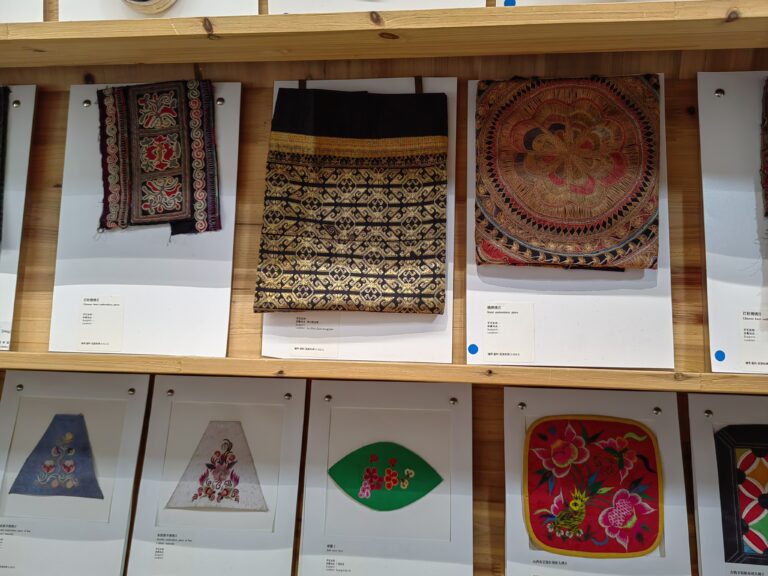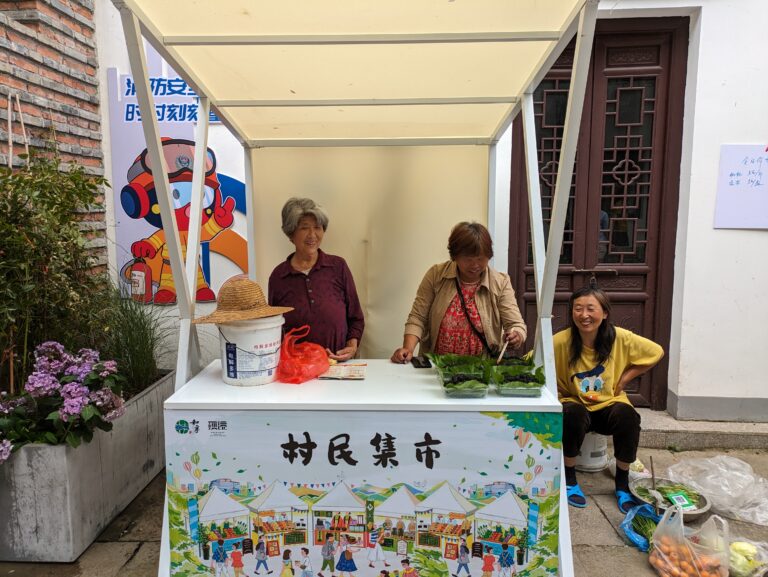On invitation of the Leibniz Center for Agricultural Landscape Research (ZALF), DCZ experts Eva Sternfeld and Michaela Böhme had the opportunity to participate in a study trip aimed at exploring compensation schemes for ecosystem services in China. The trip was jointly organized by ZALF and the Institute of Geographic Sciences and Natural Resources Research at the Chinese Academy of Sciences (CAS) and took place from 21–25 May. The DCZ experts joined a conference at the Institute for Public Affairs of Zhejiang University on the topic of “Institutional innovations towards integrated natural resources management” and visited several villages around Hangzhou and Huzhou City in Zhejiang Province.
Conference on integrated natural resources management
In his opening speech, Tan Rong, dean of the Institute for Public Affairs, reminded the audience of the importance of governing water resources. In her fascinating presentation, Chen Xin from the School of Life Science showed scientific research result highlighting the extremely relevant ecosystem functions of the traditional rice-fish system that has been practiced in the Hangzhou region since thousands of years. Four different kinds of fish living in different water levels fulfill different functions for biological pest control and fertilizing.
Water fund project in Qingshan Village
On 22 May, the group visited Qingshan 青山 Village in Yuhang County, located 40 km from the city center of Hangzhou. In 2011, the village set up a water fund with support by the international NGO The Nature Conservancy (TNC) and Alibaba Group.
Bamboo forestry, which encompasses the production of raw materials and bamboo shoots, represents the primary source of agricultural income for many local farmers, but overuse of chemical fertilizers and pesticides has polluted many of the local waterways.
The fund contracted 500 mu (approx. 33 ha) of bamboo forest upstream a drinking water reservoir and implemented water protection measures such as banning pesticides and fertilizers. The fund compensates farmers for giving up the use of inputs based on market prices of bamboo products.
The water fund is also funded by the village-owned enterprise. According to the village community center, 10% of all proceeds from the village restaurants and tourism services go into the fund.
In recent years, the water quality has improved considerably and with support of TNC as well as a group of young, creative designers who settled down in the Qingshan, the village has become a popular destination for urban visitors. An artist and designer from Serbia as well as a German artist have lived here for more than 10 years and have been creating modern designer pieces based on traditional Chinese material culture. With their help, an old community center was recently renovated and transformed into the Rong Design Library that collects samples of traditional materials and handicrafts. These activities have also created new income opportunities for the old villagers such as setting up restaurants.
Mulberry dyke fishpond (MDFP) system in Digang Village
Digang Village, Nanxun County is located close to Huzhou City. The village used to be a stronghold of mulberry dyke fishpond farming—a traditional Chinese agricultural system based on three components: mulberry tree cultivation, silkworm rearing, and fish farming.
Mulberry leaves feed the silkworms, whose excrete and sloughs serve as food for the fish in the pond whilst the fish excrete fertilises the pond mud. Farmers will bring the bottom mud up and pile it on the embankments as organic fertiliser for the mulberry trees. This makes the system an early example for an eco-friendly agricultural landscape and circular production model.
The MDFP system provides multiple functions, including agricultural, ecological, and cultural functions, but with the impact of modern agriculture and industry, the system is facing the risk of extinction. In 2017, the mulberry dike fishpond system in the Huzhou area was identified by the Food and Agriculture Organization of the United Nations (FAO) as ‘an important global agricultural cultural heritage’ (GIAHS).
As a GIAHS site, Digang Village is committed to conserving the MDFP system whilst optimizing benefit-sharing amongst different groups of stakeholders. As income from traditional silkworm rearing is low and market prices are volatile, local farmers can opt to rent out their land to a village-managed company dedicated to preserving the MDFP system. Next to rental income, farmers can generate income from tourism as urban visitors are attracted to the unique agricultural landscape and village features preserved in Digang. Profits from the village company are reinvested into community services or used to enhance eco-tourism infrastructure.
The village also provides nature education. With support from the village committee, several local households have been trained to be able to receive school groups from neighbouring cities to educate children on local farming and cooking techniques.
Freshwater pearl farming in Deqing County
The delegation also visited several freshwater pearl farming projects in Deqing County near Huzhou City. Freshwater pearl farming has a long tradition in the region, and improved techniques developed in the 1960s led to a boom in the industry.
The delegation visited an aquaculture base in Xiaoshanyang, where mussels and fish are raised in a symbiotic relationship. The base belongs to Oushiman Group, the country’s largest freshwater pearl producer, whose headquarters and pearl museum we visited afterwards.












